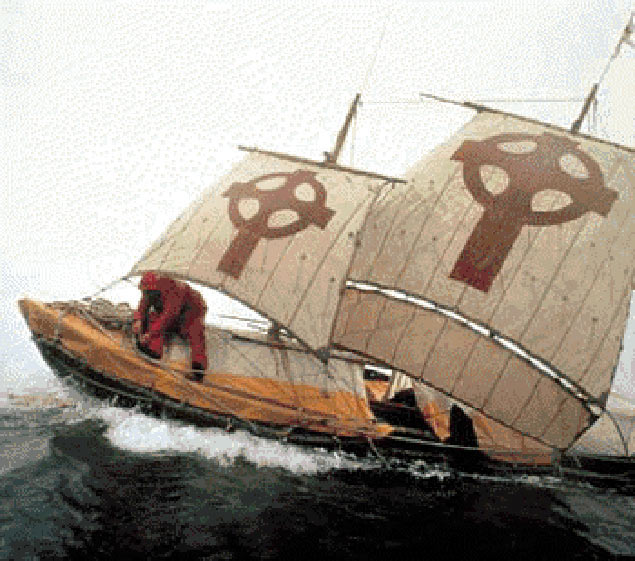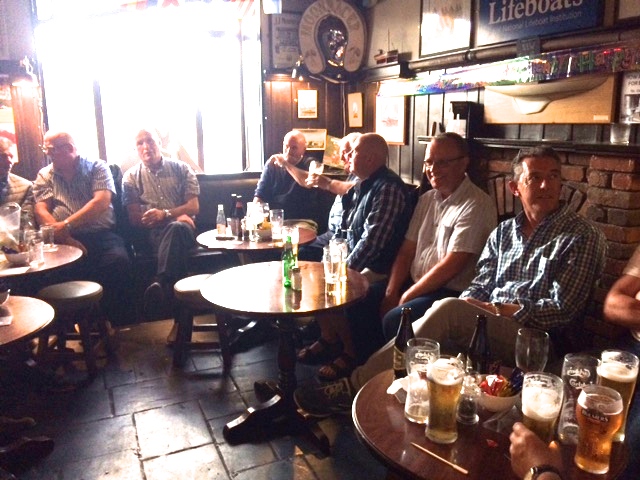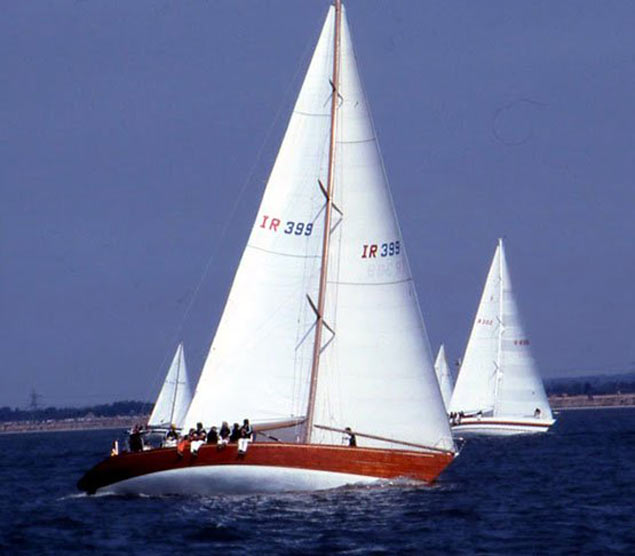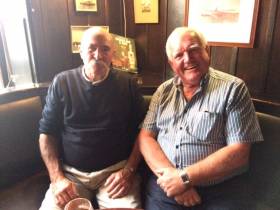Displaying items by tag: Willie Lee
Crosshaven Shipwright Willie Lee Retires After Fifty Years
A very pleasant nostalgia-laden party in The Oar pub in Crosshaven on Friday night honoured shipwright Willie Lee, who was retiring after fifty years with Crosshaven Boatyard writes W M Nixon. In addition to colleagues past and present, the attendance included former boatyard MD Wally Morrissey, and satisfied customers such as Darryl Hughes, who is delighted with the work Willie has done on his classic 1937 ketch Maybird, and managed to get us some photos of this historic event
They had much to remember and celebrate, and some very famous boats to recall. One of the best, though she no longer sails the seas, was Francis Chichester’s Gipsy Moth V, a very special ketch on which Willie worked in 1970.
After his epic round the world voyage with the temperamental Gipsy Moth IV in 1968 - a boat which was a “committee product” if ever there was one - Chichester recalled that he had been happiest with boats designed by Robert Clark and built in Ireland, so he decided to reactivate both connections. By this time, Robert Clark was doing work for Denis Doyle of Cork, whose many interests included Crosshaven Boatyard, so all the signs pointed there.
 The Robert Clark-designed Gipsy Moth V shortly after her launching in Crosshaven in 1970. Photo: W M Nixon
The Robert Clark-designed Gipsy Moth V shortly after her launching in Crosshaven in 1970. Photo: W M Nixon
The upshot of this was that in 1969-70, the special ketch Gipsy Moth V was built in the yard to Robert Clark’s design. Chichester was well pleased with her, as she was good-mannered and fast, enabling him to establish his objective of setting a record time for sailing between West Africa and South America.
He kept the Crosshaven-built boat until his death, when she was bought by another long-distance solo sailor who was grabbing some much-needed sleep when approaching Sydney in Australia during a round the world race, and an unfortunate change of wind caused Gipsy Moth V to alter course and come ashore in a rock cleft to become a total wreck, a much-regretted loss.
 The Crosshaven-built 36ft sailing currach St Brendan succeeded in the east-west Atlantic crossing in 1976-77
The Crosshaven-built 36ft sailing currach St Brendan succeeded in the east-west Atlantic crossing in 1976-77
Meanwhile, Willie Lee and his colleagues beck in Crosshaven were to complete many other boat-building projects, the most unusual being the giant sailing currach St Brendan for explorer/adventurer Tim Severin. As this special craft was skinned with oxhide, a corner of Crosshaven smelled like a tannery – “stank” might be the better word – for some time. But in 1976-77, the St Brendan achieved the Transatlantic voyage by the northern route to prove that Ireland’s pioneering voyaging saints would have had the boats and capacity to do it as the legends would have it, and the vessel is now happily preserved in the Craggaunowen Heritage Park in south County Clare.
 A time for memories, a time to honour traditional skills. Willie Lee’s retirement party in The Oar pub in Crosshaven. Photo: Darryl Hughes
A time for memories, a time to honour traditional skills. Willie Lee’s retirement party in The Oar pub in Crosshaven. Photo: Darryl Hughes
For the Irish sailing community, the most important boat on which Willie Lee worked was the wonderful Moonduster in 1981, the Frers 51 which Denis Doyle himself owned until his death in 2001, when she was sold away from Cork. For those twenty marvellous years, Moonduster was Ireland’s flagship, a great credit to everyone involved with her, both the builders and those who sailed her - all of whom will wish Willie Lee the very best in his well-earned retirement.
 The marvellous Moonduster – Willie Lee was one of those who built her in 1980-81
The marvellous Moonduster – Willie Lee was one of those who built her in 1980-81





























































